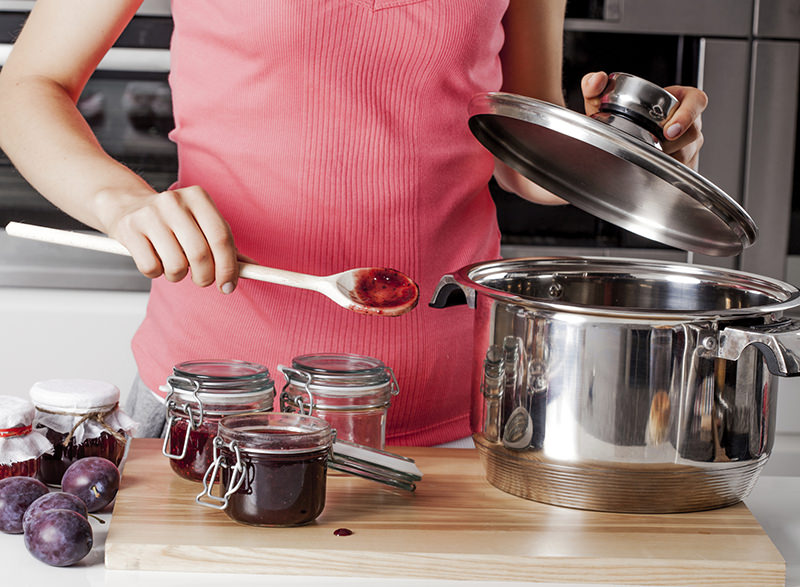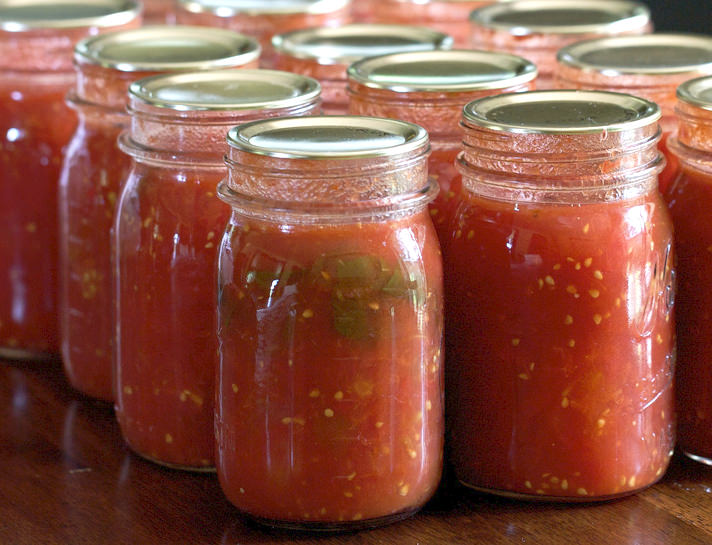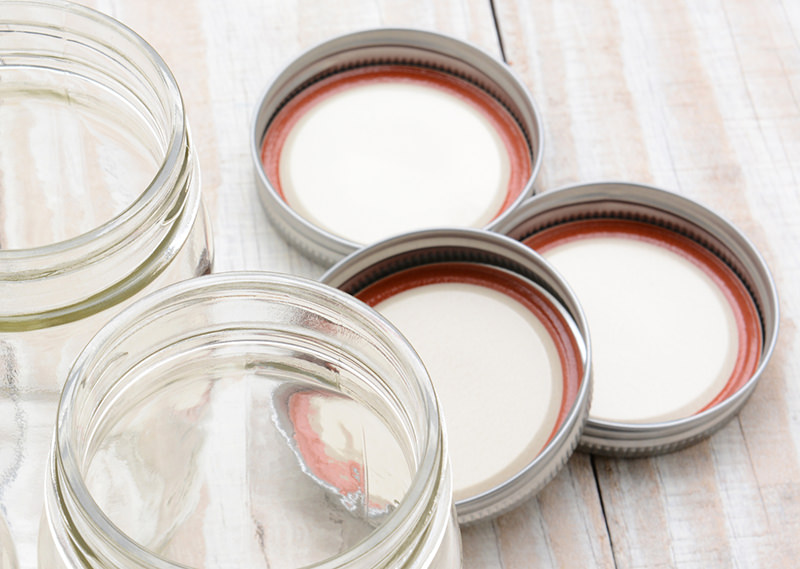
In the decade or more that I have taught safe food preservation classes, I’ve gotten many questions about using old family canning recipes or techniques that “my grandmother taught me.” As a Certified Master Food Preserver representing the state extension office, my response usually goes something like this: “I’m not going to tell you that it won’t work (because obviously it did for someone years ago), but I cannot tell you that it’s safe.”
As we put time, energy and resources into preserving our own farm produce each year it is extremely important—in fact vital—to guarantee that the goods will be safe to eat when opened later in the year. As home canning techniques and recipes have evolved over the decades and have been explored in great depth with the resurgence of personal food preservation, the home canner benefits from knowing current recommendations and rules for creating safely canned products.
1. Old Canning Recipes Might Not Be Safe

This is one of the first questions I get regarding food preservation. So much of my enthusiasm for food relates to memories of recipes that my Gramma would regularly prepare. When she passed away and we sorted through her belongings, it wasn’t the fine china that everyone wanted but the last jar of dilly beans sitting on the pantry shelf. One taste and our Gram was right back with us.
Unfortunately, many common practices our grandmothers used are no longer considered safe. Is it that we’ve raised our standards for food safety and sanitation or has something changed with the food that we’re preserving? Perhaps a little of both.
If someone is set on using an old family recipe, I offer a few suggestions. Since canning’s resurgence, tons of great tested recipes have been developed that are safe for home use. Find one that is close to the family recipe and can it, or prepare the original recipe and freeze it. Freezing may not be ideal for maintaining texture in pickles and other whole foods, but it’s great for jams and tomato sauces. Alternatively, check with your county extension service or a Master Food Preserver to review the recipe and check its safety, or find ways to adapt the recipes for today’s practices. Often, you can analyze the ingredients, determine acidity, and confirm whether the processing times are up to current standards.
Some Traditional Canning Techniques Are No Longer Acceptable

Not only should one be cautious of old recipes but also of old canning techniques. I cringe in my classes and presentations when students reveal that their canning experience consists of filling jars with hot liquid, capping, then turning upside down to seal. While the jars might seal, the contents won’t necessarily remain safe when left on a shelf for long periods of time. In my opinion, it’s just not worth the time, energy and money that goes into the procurement and preservation process to take your chances with unreliable techniques.
“Open Kettle Canning” or “Upside Down Sealing” (still often recommended in European texts) are both vintage sealing methods no longer considered safe. With these techniques, one pours hot preserves into hot jars, wipes the rims, and puts on the lids and rings. With upside down sealing one would proceed to invert the jars. As the jars cool down, they’ll physically produce a seal, but there’s no guarantee that what’s in the jar is safe. High-heat processing over a specific amount of time required in both hot waterbath canning and pressure canning is part of what prevents bacterial growth.
The high acid content of a product (pH of 4.5 or lower) necessary to use the hot water bath method is also vital in safe preservation. Regular green beans canned in water and not brine could potentially seal after hot water bath canning, but that does not mean they’re shelf stable. Clostridium botulinum are anaerobic bacteria, meaning they can continue to grow without oxygen present in a low-acid environment.
The last method in question is using paraffin wax to seal jams and jellies. This light, dense liquid floats on top of the preserves then hardens. Because paraffin is not porous, it was believed that oxygen could not get at the product inside the jar when covered with this wax. Aside from the dangers of using hot wax and having a petroleum product in direct contact with the preserves, this method would only sometimes produce a safe product—it was most certainly not meant for long-term storage. With home preservation “close enough” is not enough in terms of food safety.
Tomato-Canning Rules Have Changed

I will never forget the frustration I heard from a student owning a treasured copy of a classic book on preserving food when I told her that certain canned tomato recipes in this book were no longer good. The natural acidity of the tomatoes grown 30 years ago and the hybrids grown today varies greatly.
Because tomatoes lie at the upper end of the range of foods that can be safely preserved via hot water bath (pH of 4.5 or lower), you must add additional acid. A recipe that doesn’t require this for hot-waterbath processing is no longer a safe recipe. Recipes with vegetables added to the tomatoes—such as pasta sauce with peppers, onions, garlic and mushrooms—but no additional acid are definitely suspect. Freezing these recipes is always an option, as is canning them in a pressure canner, which raises the internal temperature so that Clostridium botulinum spores are killed, though I still recommend consulting a tested recipe to make sure you know the proper settings and processing time.
For the record, I also get asked about heirloom tomato varieties. People assume that the acidity level has not been tampered with through hybridization, so they can treat them like the tomatoes of old when those recipes were written. My recommendation is to treat all tomatoes the same, whether they’re hybridized, heirloom, yellow (lower acid) or red, and add the indicated amount of acid to the recipe before processing in a hot waterbath canner.
New Recommendations Exist for Sterilizing Jars

A more recent change in the canning world happened in 2014 when the company that makes Ball canning jars told us we no longer have to heat our metal lids in hot water before canning. The purpose of this step was to soften the rubber gasket and prepare the lids to create a good seal on the jar rim.
The new recommendation is that it is not necessary to heat the lids at all, though we still need to make sure they’ve been washed. Through additional testing since the original recommendations for heating the lids, they’ve come to understand that the rubber part of the lid would soften and thin out enough during processing so that a good seal would form.
So one can heat or not preheat the lids, as long as one does not overheat them. This could cause the plastisol to thin out too much and not produce a good seal for long-term storage. Water for heating lids should be no more than 180 degrees F—a simmer.
Simple Rules For Safe Canning
Canning is a time-honored tradition, and our grandmothers would be proud to know we’re keeping it alive. Whether you’re getting ready to preserve your first harvest or your hundredth, here are some safety guidelines you should never compromise:
- Always use a tested recipe, and do not change the ingredients.
- Work cleanly.
- Do not alter the recipe’s method of preservation.
- Process foods for the exact time indicated in the recipe for jar size used—it’s better to err on the side of more time.
The way I see it, if we’re going to put our time, energy and resources into food preservation, why not practice techniques that guarantee the safest product? Knowing when to retire a family canning recipe or technique to the memory book might be hard, but it’s very much worth it.




